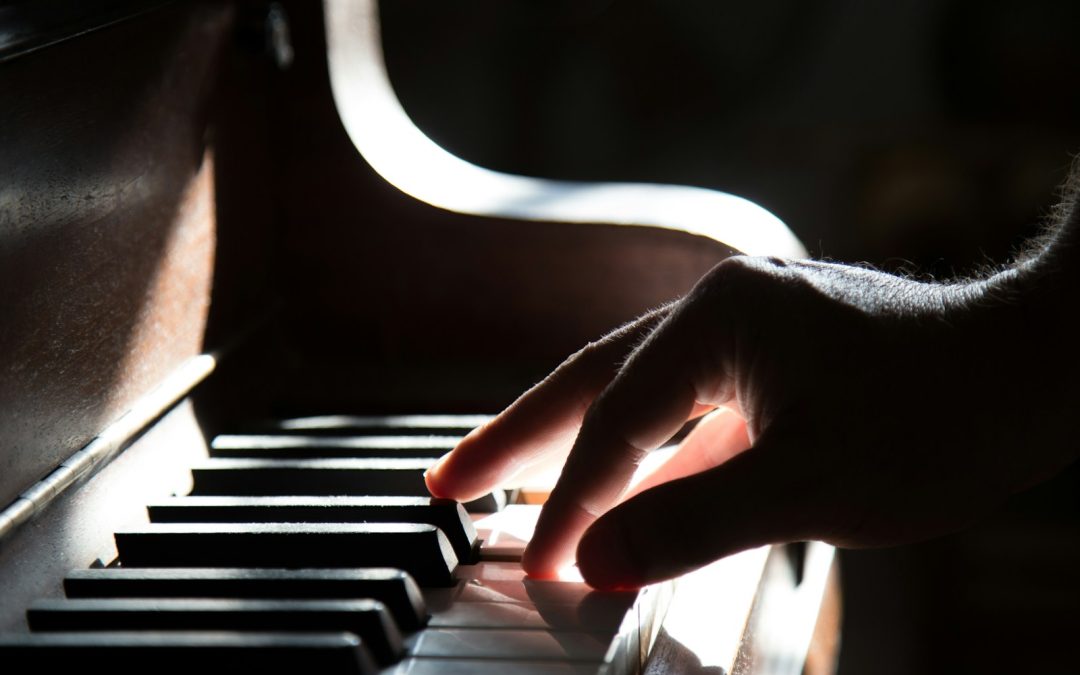Ever wondered about the similarities between a piano and a keyboard? I've spent years exploring these two fascinating instruments and I'm excited to share my insights with you. At first glance, they might seem quite different, but you'll be surprised by how much they actually have in common.
In this article, we'll delve into the shared characteristics of pianos and keyboards. We'll look at their structure, the way they produce sound, and even the skills needed to play them. Whether you're a seasoned musician or a curious beginner, there's something here for everyone.
Structure of a Piano
The first thing to note is that pianos, whether grand or upright, are predominantly made of wood. This natural material not only looks aesthetically pleasing but significantly influences the instrument's acoustics. Remember, it's the wood that resonates when the hammer strikes a string, creating the rich, warm tones that are so distinctive to acoustic pianos.
Let's delve into the foundation of the piano's structure, which is, undoubtedly, its soundboard. Typically made from spruce, the soundboard's purpose is to amplify the vibrations from the strings, turning them into the sounds we recognize as musical notes. I can't overstate the importance of the soundboard. Without it, the piano would be almost inaudible.
Moving on, another integral part of the piano's structure is its keyboard. A standard piano has 88 keys, a mix of 52 white keys and 36 black keys. The keyboard's job? It provides the interface that allows us musicians to interact with the instrument and create music.
Thirdly, I want to talk about the strings. They're the voice of the piano, ranging in thickness and length to produce different pitches. The strings lie at the heart of the sound-making process: when you press a key, it triggers a hammer that strikes a specific string.
Finally, we mustn't forget the pedals. Normally, a piano has two or three pedals that provide various sound effects. The sustain pedal, the soft pedal, and on some pianos, the sostenuto pedal. By altering the way strings vibrate, pedals can sustain notes, soften sounds, or enable selective sustain.
The structure of a piano may seem complex, but in reality, it's this intricate design and craftsmanship that grants its unique, enchanting sound. Let's keep exploring other remarkable aspects of these enthralling musical instruments.
Structure of a Keyboard
Ever wondered how keyboards produce those rich, layered sounds? Just like with pianos, it's not all magic, so let's delve into the inner workings of keyboards.
Keyboards operate on a whole different principle as compared to pianos. Instead of relying on acoustic science and raw materials like wood, keyboards use digital technology. This can give keyboards a distinct advantage as this allows them to mimic not only the sound of a piano but also other instruments.
At the core of a keyboard is its microprocessor. This brainbox is responsible for translating key presses into sound signals. Although I think it's important to note that the complexity of these processors varies greatly between models, with some offering more responsive action and nuanced sound generation than others.
The individual keys on a keyboard work by activating switches under each key. When the key is pressed, the switch sends an electric signal to the microprocessor. This signal is then translated into a corresponding musical note, which is output through the keyboard's speakers.
Keyboards also come with a wide array of additional features, providing a broader palette of sound-bending tools. Examples include modulation wheels, pitch bends, and effects such as reverb, echo, and others. Some even come with preloaded beats to accompany your solo performance.
Much like pianos, keyboards also make use of pedals though theirs is often optional and is used to sustain or mute the sound. One key difference however is that the sound from a keyboard doesn't reverberate the same way as in a piano, due large in part to the lack of a soundboard.
In terms of materials, keyboards are generally made of plastic and metal, making them lighter, portable, and more flexible than their piano counterparts. Each of them has their unique construct and manufacturing process, offering their specific set of features and sound quality.
So while, in appearance, the keyboard and piano might seem similar, they have their respective mechanisms and workings. Each offers a distinct level of complexity and sophistication, creating a world of versatile sounds for music enthusiasts. The choice between them thus boils down to individual preference, commitment, and the type of music you wish to create.
Sound Production in Pianos and Keyboards
Over the years, I've come across various musical instruments. However, the intricacies and differences in sound production between pianos and keyboards absolutely intrigue me.
Let's delve into the world of pianos first. The sound produced by a piano is a result of acoustic science at work. When a pianist strikes a key, a hammer mechanism inside the piano cause the corresponding string to vibrate. It's these vibrations that produce the rich, resonant sounds we associate with pianos.
Here's a simplified breakdown of the process:
- Pianist strikes a key
- Lever action of the key escapement lifts the hammer
- Hammer strikes the string
- String vibrates and produces sound
The unique material composition of a piano, usually a mix of metal, wood, and felt, adds to the authenticity and warmth of its sound. Each piano has a distinct character because of the variations in their components and constructions.
Transitioning to the realm of keyboards, they operate on the foundations of digital technology. Unlike the piano, keyboards don't rely on physical strings or hammers. At the core of a keyboard is its microprocessor, which translates key presses into sound signals. I find it fascinating that the individual keys on a keyboard work by activating switches under each key, sending an electric signal to generate sound.
To put it simply:
- Keyboard player presses a key
- Key activates a switch
- Switch sends signal to microprocessor
- Microprocessor generates and outputs sound
Given their digital nature, keyboards also offer a plethora of additional features such as modulation wheels, pitch bends, and effects. This versatility is a bonus for artists looking to explore a myriad of sounds and musical styles.
The beauty of music lies in its diversity, and both pianos and keyboards have their distinctive place in the grand scheme of things. Choosing between them is a matter of individual preference and the type of music one aspires to create. Even as we continue to delve deeper into their respective mechanisms and workings, there's always more to discover and appreciate in both these wonderful instruments.
Key Differences and Similarities in Sound Quality
As a seasoned musician, I'll tell you that there's a fundamental difference in the sound produced by a traditional piano and a digital keyboard. Pianos, with their hammers and strings, deliver rich, vibrant acoustics. They create a resonating sound that's warm and organic, capturing the true essence of the music being played.
On the other hand, keyboards possess a digital heartbeat, powered by a microprocessor. This advanced technology feeds off digitally stored sound samples. The acoustic 'sampling' enables the recreation of a wide array of instrument sounds - not just the piano. It even offers special effects like reverb, delay, and others.
There's also an aspect of sound manipulation with keyboards that is simply not there with conventional pianos. Keyboards can electronically control the sound's frequency, amplitude, and other characteristics. This leads to a greater variety of sound; from pitch bends to modulation wheels, there's a whole world of sonic exploration at your fingertips.
What about sound quality? Well, professional keyboards can generate sound extremely similar to pianos. Some high-end models even use the actual piano sound samples to offer an almost identical experience. However, aficionados argue that despite the technology, keyboards can't quite match the unequivocal depth and complexity of acoustics a well-tuned piano delivers.
No argument, both pianos and keyboards have their unique sound profiles and each has its own place in the music world. The choice between them hinges on personal preference, the style of music, and perhaps even the performance setting. Acknowledging these differences and similarities brings us closer to making an informed decision, better suited to our individual needs and goals.
Playing Skills: Transferable or Different?
So, you've gotten a firm grasp on the sound production aspect of pianos and keyboards. I'm sure you're now pondering if the playing skills for these instruments are interchangeable, or if they differ substantially.
Let's delve into this intriguing topic. Many of you might already know that the basic playing technique is, indeed, transferable. Both pianos and keyboards share identical layout of keys. This means that the fundamental knowledge of scales, chords, and progression you've mastered on a piano will effortlessly translate to a keyboard — and vice versa.
On the flip side, serious musicians will tell you that the devil's in the detail. They're not wrong. For instance, a noticeable difference lies in the tactile sensation under your fingertips. Acoustic pianos sport wooden or ivory keys, and when pressed, a physical hammer strikes against a set of strings, creating a distinct touch experience. This touch sensitivity is something that most keyboards, specifically lower-end models, can struggle to replicate.
Moreover, keyboardists have additional elements at their disposal — modulation wheels, pitch bends, and a world of digital sound manipulation tricks. Getting the hang of these enhancements requires practice beyond traditional piano training. These additional features open up an entirely new universe of possibilities, allowing you to add unique flairs to your performances that simply aren’t possible on an acoustic piano.
Ultimately, while the basic playing skills are largely transferable between pianos and keyboards, proficiency in a singular instrument would necessitate understanding and mastering their unique nuances. This raises an interesting question — rather than asking which is better, maybe we should be considering how the two can complement each other within the spectrum of musical performance.
After all, why limit yourself to one when you can tap into the best of both worlds? Music, like many forms of creativity, thrives on diversity and the merging of different skills and elements. That's what fuels its evolution and keeps the audial landscape engaging.
Conclusion
So, it's clear that pianos and keyboards share a common ground with their identical key layout. This similarity eases the transition of skills from one instrument to the other. Yet, they offer distinct experiences, from the touch of wooden or ivory keys on a piano to the extra elements like modulation wheels on keyboards. It's not about determining which is superior. Instead, I believe the beauty lies in understanding how these two instruments can enrich each other, broadening the horizons of musical performance. Whether you're a pianist or a keyboardist, there's always something to gain from exploring the other side. Embrace the differences, appreciate the similarities, and let's continue to make beautiful music.
Harlan Kilstein began playing piano during covid with no piano background at all. He taught himself how to play learning what to do and what not to do.
Today he's an advanced intermediate player and can help you grow in your skills because he learned all this on his own.








